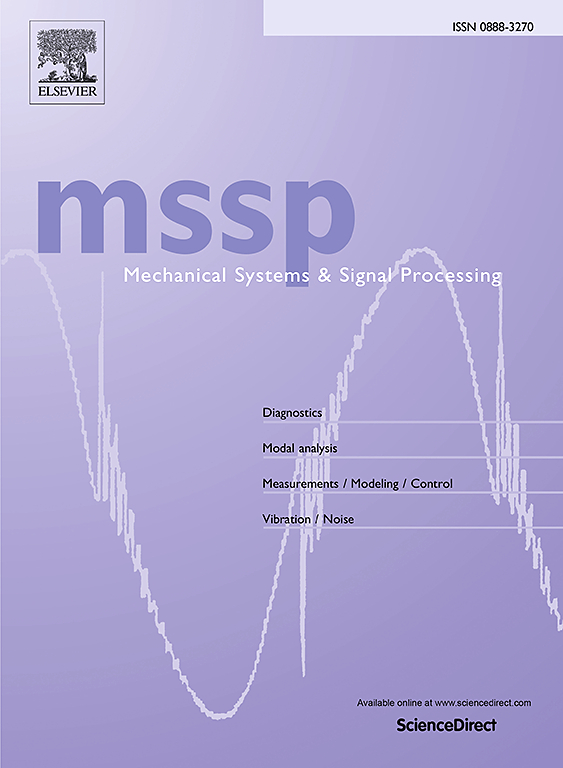通过块稀疏性诱导贝叶斯学习恢复叶尖定时信号的频谱
IF 7.9
1区 工程技术
Q1 ENGINEERING, MECHANICAL
引用次数: 0
摘要
压缩传感(CS)是在严重采样不足的条件下恢复叶尖定时(BTT)信号频谱的有效策略。然而,现有 CS 方法的功效取决于对参数的细致调整,这限制了它们在不同操作场景下的灵活性。本文介绍了一种新颖的块稀疏贝叶斯学习(BSBL)方法,旨在精确重建采样不足的 BTT 信号频谱。通过在稀疏贝叶斯学习(SBL)先验中嵌入块稀疏性约束,BSBL 方法显著改进了 BTT 信号的特征表示,超越了传统技术的能力。通过基于期望最大化算法的迭代更新机制,BSBL 算法的参数可在不同工作条件下进行自适应改进。数值模拟和旋转叶盘实验跨越了旋转速度和信噪比(SNR)的范围,证明了 BSBL 算法在 BTT 信号频谱恢复和目标频率识别方面的卓越准确性,即使在不同的工作条件下也是如此。实验结果表明,BSBL 算法在不同设置的旋转叶片上实现了低于 0.3 Hz 的前两阶模式频率误差和低于 10 % 的能量误差率。本文章由计算机程序翻译,如有差异,请以英文原文为准。
Spectrum recovery of the blade tip timing signal via the block sparsity-induced Bayesian learning
Compressive sensing (CS) emerges as a potent strategy for the recovery of blade tip timing (BTT) signal spectrum under conditions of severe undersampling. Yet, the efficacy of prevailing CS methods is contingent upon meticulous parameter tuning, limiting their flexibility across varying operational scenarios. This paper presents a novel block sparse Bayesian learning (BSBL) methodology designed to precisely reconstruct the spectra of undersampled BTT signals. By embedding block sparsity constraints within the sparse Bayesian learning (SBL) prior, the BSBL approach notably refines the feature representation of BTT signals, surpassing the capabilities of traditional techniques. The BSBL algorithm’s parameters are adaptively refined under diverse working conditions through an expectation–maximization algorithm-based iterative updating mechanism. Numerical simulations and rotating leaf disk experiments, spanning a spectrum of rotational velocities and signal-to-noise ratios (SNRs), substantiate the BSBL algorithm’s exceptional accuracy in BTT signal spectrum recovery and target frequency identification, even under heterogeneous operating conditions. Experimental results illustrate that the BSBL algorithm achieves mode frequency errors of the first two orders below 0.3 Hz and energy error rates below 10 % for rotating blades across different settings.
求助全文
通过发布文献求助,成功后即可免费获取论文全文。
去求助
来源期刊

Mechanical Systems and Signal Processing
工程技术-工程:机械
CiteScore
14.80
自引率
13.10%
发文量
1183
审稿时长
5.4 months
期刊介绍:
Journal Name: Mechanical Systems and Signal Processing (MSSP)
Interdisciplinary Focus:
Mechanical, Aerospace, and Civil Engineering
Purpose:Reporting scientific advancements of the highest quality
Arising from new techniques in sensing, instrumentation, signal processing, modelling, and control of dynamic systems
 求助内容:
求助内容: 应助结果提醒方式:
应助结果提醒方式:


